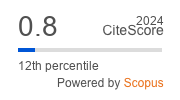A new generation of nanocomposite materials based on carbon and titanium for use in supercapacitor energy storage devices
https://doi.org/10.17073/1609-3577-2019-3-212-218
Abstract
About the Authors
V. V. SleptsovRussian Federation
Vladimir V. Sleptsov: Dr. Sci. (Eng.), Professor, Head of Department
L. V. Kozitov
Russian Federation
Lev V. Kozitov: Dr. Sci. (Eng.), Professor
A. O. Diteleva
Russian Federation
Anna O. Diteleva: Assistant
D. Yu. Kukushkin
Russian Federation
Dmitry Yu. Kukushkin: Dr. Sci. (Eng.), Assistant
A. A. Nagaev
Russian Federation
Artem A. Nagaev: Student
References
1. Pelevin F. V. Technology for manufacturing porous materials. Bulletin of the Association of tourism and service universities, 2007, vol. 1, no. 3, pp. 46—51. (In Russ.)
2. Voropai A. N. Poluchenie nanostrukturirovannykh kompozitov na osnove vysokoporistykh uglerodnykh matrits, napolnennykh Ni ili Ni(OH)2, opredelenie faktorov, vliyayushchikh na ikh fiziko-khimicheskie svoistva [Obtaining nanostructured composites based on highly porous carbon matrices filled with Ni or Ni(OH)2, determination of factors affecting their physicochemical properties.] Symmary of Diss. Cand. Sci. Chem. Kemerovo, 2014, 23 p. (In Russ.)
3. Burke A. Ultracapacitors: why, how, and where is the technology. J. Power Sources, 2000, vol. 91, no. 1, pp. 37—50. DOI: 10.1016/S0378-7753(00)00485-7
4. Simon P., Gogotsi Yu. Materials for electrochemical capacitors. Nature materials, 2008, vol. 7, pp. 845—854. DOI: 10.1038/nmat2297
5. Kötz R., Carlen M. Principles and applications of electrochemical capacitors. Electrochimica Acta, 2000, vol. 45, no. 15–16, pp. 2483—2498. DOI: 10.1016/S0013-4686(00)00354-6
6. Balyshkov A. Ionistors. Elektronnye komponenty, 2005, no. 11/12, pp. 91—97. (In Russ.)
7. Zhou W.-J., Xu M.-W., Zhao D.-D., Xu C.-L., Li H.-L. Electrodeposition and characterization of ordered mesoporous cobalt hydroxide films on different substrates for supercapacitors. Microporous and Mesoporous Materials, 2009, vol. 117, no. 1–2, pp. 55—60. DOI: 10.1016/j.micromeso.2008.06.004
8. Wutao Wei, Liwei Mi, Yang Gao, Zhi Zheng, Weihua Chen, Xinxin Guan. Partial ion-exchange of nickel-sulfide-derived electrodes for high performance supercapacitors. Chem. Mater., 2014, vol. 26, no. 11, pp. 3418—3426. DOI: 10.1021/cm5006482
9. Patent 2026732 (RF). Sposob polucheniya sorbenta dlya vydeleniya belkov [A method of producing a sorbent for the isolation of proteins]. V. A. Vasilevskii, V. A. Avramenko, L. A. Zemskova, T. A. Sokol’nitskaya, 1995. (In Russ.)
10. Patent 2075170 (RF). Sposob polucheniya tonkosloinykh neorganicheskikh sorbentov [A method of obtaining thin-layer inorganic sorbents]. L. A. Zemskova, E. L. Yakimovich, V. A. Avramenko, V. V. Zheleznov, V. Yu. Glushchenko, 1997. (In Russ.)
11. Liang H., Chen F., Li R., Wang L., Deng Z. Electrochemical study of activated carbon-semiconducting oxide composites as electrode materials of double-layer capacitors // Electrochimica Acta, 2004, vol. 49, no. 21, pp. 3463—3467. DOI: 10.1016/j.electacta.2004.03.016
12. Sheveleva I. V., Zemskova L. A., Voit A. V., Zheleznov S. V., Kuryavyi V. G. Relationship between electrochemical and structural properties of modified carbon fibers. Russ. J. Appl. Chem., 2007, vol. 80, no. 5, pp. 740—745. DOI: 10.1134/S1070427207050102
13. New carbon based materials for electrochemical energy storage systems: batteries, supercapacitors and fuel cells. Eds. by I. V. Barsukov, C. S. Johnson, J. E. Doninger, V. Z. Barsukov. Dordrecht: (Netherlands), 2006, pp. 33—41. DOI: 10.1007/1-4020-4812-2
14. Zemskova L. A., Sheveleva I. V., Barinov N. N., Kaidalova T. A., Voit A. V., Zheleznov S. V. Manganese oxide carbon fibrous materials. Russ. J. Appl. Chem., 2008, vol. 81, no. 7, pp. 1187—1192. DOI: 10.1134/S1070427208070124
15. Zemskova L. A. Modified carbon fibers: sorbents, electrode materials, catalysts. Vestnik of Far Eastern Branch of Russian Academy of Sciences, 2009, no. 2, pp. 39—52. (In Russ.)
16. Jakubowicz J., Adamek G., Dewidar M. Titanium foam made with saccharose as a space holder. J. Porous. Mater., 2013, vol. 20, pp. 1137—1141. DOI: 10.1007/s10934-013-9696-0
17. Vu D. H., Sleptsov V. V. Development of technology for electrode materials. International Research Journal, 2015, no. 11, pt 2, pp. 22—29. (In Russ.). DOI: 10.18454/IRJ.2015.42.095
18. Sleptsov V. V. Fiziko-khimicheskie osnovy nanomaterialov i nanotekhnologii [Physico-chemical fundamentals of nanomaterials and nanotechnology]. Moscow: MATI-RGTU im. K. E. Tsiolkovskogo, 2015, 196 p. (In Russ.)
19. Nesterov V. A., Kukushkin D. Yu., Kozlov A. P. Investigation of the metallization of porous materials by deposition of metal nanoclusters onto the surface by electrophoresis. Sbornik tezisov dokladov XLIV Mezhdunarodnoi molodezhnoi nauchnoi konferentsii “Gagarinskie chteniya-2018” = Abstracts of the XLIV International Youth Scientific Conference “Gagarin Readings-2018”. Moscow: MAI, 2018, p. 281. (In Russ.)
20. Sleptsov V. V., Savkin A. V., Kukushkin D. Yu., Diteleva A. O. Research of the deposition process of metal nanoclusters on the surface of porous materials by the electrophoresis method. Vestnik mashinostroeniya, 2018, no. 9, pp. 45—47. (In Russ.)
21. Goffman V. G., Gorokhovsky A. V., Gorshkov N. V., Telegina O. S., Kovnev A. V., Orozaliev E. E., Sleptsov V. V. Impedance spectroscopy of polymer composites based on base potassium polytitanate. Elektrokhimicheskaya Energetica = Electrochemical Energetics, 2014, vol. 14, no. 3, pp. 141—148. (In Russ.)
22. Gorokhovsky A. V., Palagin A. I., Panova L. G., Ustinova T. P., Burmistrov I. N., Aristov D. V. Manufacturing submicro-nanoscale potassium polytitanates and composite materials based on them. Nanotekhnika, 2009, no. 3, pp. 38—44. (In Russ.)
23. Gorokhovsky A. V., Panova L. G., Burmistrov I. N., Ustinova T. P., Levkina N. L. Potassium polytitanates with a fibrous and scaly structure: synthesis and application. International forum on nano-technology: collection of reports of scientific and technological sections. Moscow: Rosnano, 2008, vol. 1, pp. 168—169. (In Russ.)
Review
For citations:
Sleptsov V.V., Kozitov L.V., Diteleva A.O., Kukushkin D.Yu., Nagaev A.A. A new generation of nanocomposite materials based on carbon and titanium for use in supercapacitor energy storage devices. Izvestiya Vysshikh Uchebnykh Zavedenii. Materialy Elektronnoi Tekhniki = Materials of Electronics Engineering. 2019;22(3):212-218. (In Russ.) https://doi.org/10.17073/1609-3577-2019-3-212-218






































